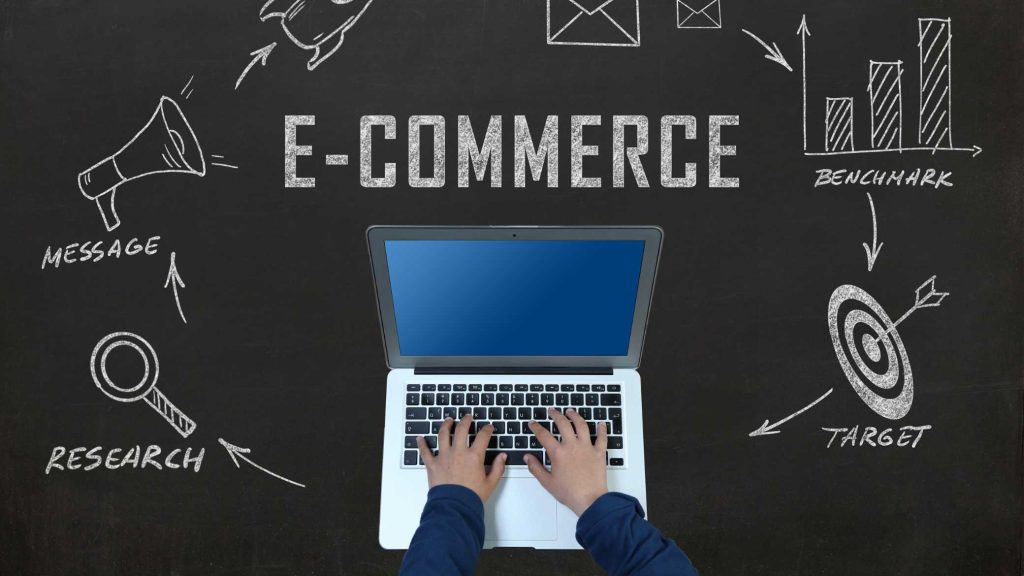Why E-commerce is the Future : Comprehensive Guide 2025
Why E-commerce is the Future The global business landscape is undergoing a monumental shift, and at the center of this transformation is e-commerce. The rapid digitization of consumer habits, advancements in technology, and the convenience-driven market dynamics have positioned e-commerce as the dominant force in the future of trade.
Table of Contents
With industries across the globe leveraging digital solutions, online shopping is not merely a trend but an essential evolution in commerce. This essay explores the multi-faceted factors contributing to the inevitable dominance of e-commerce.
1. The Role of Technological Advancements in E-commerce Growth

One of the biggest catalysts for e-commerce’s exponential growth is technological innovation. Advancements such as artificial intelligence (AI), machine learning (ML), big data analytics, and augmented reality (AR) are revolutionizing the way consumers interact with online businesses. AI-driven personalized recommendations, automated chatbots, and voice search optimization make shopping more intuitive and engaging.
Also Read : How to Sell Ebooks Profitably in 2025: A Comprehensive Guide
Moreover, technologies like blockchain and cryptocurrency are enhancing security and transparency in online transactions, addressing concerns about fraud and data privacy.
2. Changing Consumer Behavior and Expectations
The modern consumer prioritizes convenience, speed, and customization—all of which e-commerce provides seamlessly. The shift from brick-and-mortar stores to online marketplaces has been driven by the increasing reliance on smartphones and the widespread accessibility of high-speed internet. Consumers expect same-day or next-day delivery, personalized shopping experiences, and flexible payment options, which traditional retail struggles to offer at scale. Moreover, the rise of on-demand services like buy now, pay later (BNPL) options has further revolutionized consumer purchasing behavior.
3. Mobile Commerce and the Power of Smartphones
With the rise of mobile commerce (m-commerce), purchasing power is literally at consumers’ fingertips. The growing adoption of mobile payment solutions such as Google Pay, Apple Pay, PayPal, and digital wallets has accelerated the move towards cashless transactions. The integration of progressive web apps (PWAs) and mobile-friendly websites ensures seamless navigation and enhanced user experiences, further propelling e-commerce forward. Additionally, 5G technology is enhancing mobile commerce by enabling faster data transfers, seamless video streaming, and real-time engagement between businesses and consumers.
4. Social Commerce: The Intersection of Social Media and E-commerce
Social media platforms like Instagram, Facebook, TikTok, and Pinterest have transformed into powerful e-commerce hubs. Businesses now leverage influencer marketing, shoppable posts, and live-stream shopping to drive sales directly from social media. The ability to purchase products instantly through a social media feed reduces friction in the buyer’s journey, making social commerce an indispensable part of e-commerce’s future. This growing trend is supported by AI-powered algorithms that deliver targeted advertisements and customized shopping experiences.
5. The Expansion of Global Market Reach
Unlike traditional retail, e-commerce breaks geographical barriers, allowing businesses to reach a global audience effortlessly. Cross-border e-commerce is booming, with international shipping, localized websites, and multi-currency payment options enabling businesses to cater to customers worldwide. Platforms like Amazon, Alibaba, and Shopify empower small and medium-sized businesses (SMBs) to compete on a global scale. Dropshipping and print-on-demand models have further simplified market entry for entrepreneurs, making it easier than ever to establish a digital business.
6. Sustainability and the Green Revolution in E-commerce

Sustainability is a growing concern, and e-commerce is adapting to meet eco-conscious consumer demands. Brands are investing in sustainable packaging, carbon-neutral shipping, and ethically sourced products to align with environmental goals. Additionally, e-commerce platforms are promoting second-hand markets, rental services, and digital products, contributing to reduced waste and a circular economy. Companies adopting eco-friendly business models are gaining a competitive edge by attracting environmentally conscious consumers.
7. Artificial Intelligence and Automation in E-commerce
Automation is streamlining operations in e-commerce, reducing costs, and improving efficiency. AI-powered supply chain management, automated warehouses, robotic process automation (RPA), and predictive analytics are optimizing inventory management and logistics. Chatbots and AI-driven customer support enhance the shopping experience by providing instant assistance and resolving queries in real-time. Additionally, AI-powered fraud detection systems help mitigate security risks, ensuring safer online transactions.
8. The Rise of Subscription-Based E-commerce Models
Subscription-based e-commerce models are reshaping consumer purchasing habits. Platforms like Amazon Prime, Dollar Shave Club, and Netflix have demonstrated the success of recurring revenue models. Businesses offering subscription boxes, software-as-a-service (SaaS), and digital memberships are seeing increased customer retention and brand loyalty. Consumers prefer convenience and cost-effective purchasing models, making subscriptions a significant driver of e-commerce’s future growth.
9. The Influence of Augmented Reality and Virtual Reality
The integration of augmented reality (AR) and virtual reality (VR) is revolutionizing e-commerce by providing immersive shopping experiences. Customers can now virtually try on clothes, visualize furniture in their homes, or test makeup products through AR applications. This reduces return rates and enhances customer confidence in online purchases. Additionally, virtual showrooms and digital storefronts in the metaverse are shaping the next wave of online shopping.
10. The Future of E-commerce: What Lies Ahead?
The future of e-commerce is poised for further innovation with emerging trends such as:
- Metaverse shopping experiences powered by VR and blockchain-driven ownership models.
- Drone and autonomous vehicle deliveries for faster and more efficient logistics.
- AI-powered hyper-personalization providing consumers with curated product recommendations in real-time.
- Voice commerce and IoT enabling seamless voice-assisted purchases through smart home devices.
- Decentralized marketplaces and Web3 offering transparent, peer-to-peer transactions with minimal reliance on intermediaries.
Why E-commerce is the Future – Conclusion

E-commerce is not just the future; it is the present and continues to evolve at an unprecedented pace. With its ability to harness technology, consumer insights, global connectivity, and sustainability, e-commerce is set to dominate the retail industry.
Buy Now : Ecommerce Website With 100 Products
Businesses that embrace digital transformation and stay ahead of trends will thrive in the new era of commerce, making traditional retail models increasingly obsolete. As the digital economy continues to expand, the companies that innovate and adapt will lead the next wave of e-commerce evolution, shaping the way consumers shop for generations to come.
Keywords : Why E-commerce is the Future – Why E-commerce is the Future 2025 , Why E-commerce is the Future in india



